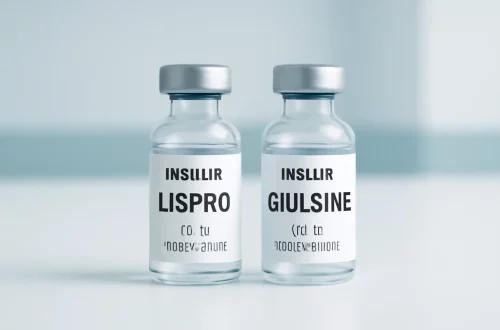
Effective Dog Leg Wraps for Injury Prevention and Comfort
In the realm of pet care, ensuring the comfort and well-being of our furry companions is paramount. Dogs, being inherently active and playful, are prone to injuries that can affect their mobility and quality of life. As responsible pet owners, we must take proactive measures to safeguard our pets from potential harm. One effective way to do this is through the use of specialized dog leg wraps. These wraps serve multiple purposes, from providing support during recovery to preventing injuries during physical activities.
The right leg wrap can not only protect against scrapes and cuts but also offer warmth and compression, which can be beneficial in various situations. Whether your dog is recovering from surgery, dealing with arthritis, or simply needs extra support during a vigorous play session, leg wraps can be a handy tool in your pet care arsenal. However, with a plethora of options available on the market, it’s essential to understand the different types of leg wraps and their specific benefits. Ultimately, the goal is to enhance your dog’s comfort and mobility while minimizing the risk of injury.
Understanding the Different Types of Dog Leg Wraps
Dog leg wraps come in various styles and materials, each designed to address specific needs. Understanding these differences is crucial for selecting the best option for your canine companion.
One of the most common types is the elastic bandage wrap, which offers a good balance of support and stretch. These wraps are often used for minor injuries, sprains, or strains. The elastic material allows for a snug fit without restricting circulation, making them a popular choice among pet owners. Elastic wraps are also lightweight, making them comfortable for dogs to wear during daily activities.
Another popular option is the neoprene wrap. Neoprene is a thicker, more durable material that provides substantial support and warmth. This type of wrap is particularly beneficial for dogs recovering from injuries or those with chronic joint issues, such as arthritis. The heat retained by the neoprene can help soothe sore muscles and joints, promoting faster recovery. Additionally, neoprene wraps often come with adjustable straps, ensuring a secure fit that accommodates various dog sizes and body shapes.
For those needing extra protection, there are padded leg wraps. These wraps feature soft padding that cushions the leg against impacts, making them ideal for active dogs that may be prone to bumps and bruises during play. Padded wraps are also useful for dogs with existing injuries, as they offer additional protection while the leg heals.
Lastly, waterproof leg wraps are a must-have for dogs that love to frolic in water or muddy environments. These wraps keep the affected area dry, preventing further irritation and allowing the injury to heal without complications. Additionally, waterproof materials can be easier to clean and maintain, ensuring that your dog stays comfortable and hygienic.
When selecting a leg wrap, it’s essential to consider your dog’s specific needs, activity level, and any pre-existing conditions. Ensuring a proper fit is crucial to prevent discomfort and to maximize the benefits of the wrap.
How to Properly Apply and Use Dog Leg Wraps
Using dog leg wraps effectively requires a bit of knowledge and practice. Proper application can enhance the benefits of the wrap while ensuring your dog’s comfort and safety.
Before applying a leg wrap, it’s vital to assess the injury or area of concern. If your dog has an open wound, consult your veterinarian to determine if a wrap is appropriate. For minor injuries or sprains, you can proceed with wrapping, but make sure to clean the area first. Use mild soap and water to cleanse the skin, and ensure that it is completely dry before applying the wrap.
When applying the wrap, start at the lower part of the leg and work your way up. This technique helps to support the joint and prevents the wrap from slipping down. As you wrap, ensure that the material is snug but not too tight. You should be able to fit one or two fingers between the wrap and your dog’s skin; if you can’t, it may be too tight and could restrict blood flow.
Additionally, it’s essential to monitor your dog while they are wearing the wrap. Check for signs of discomfort, such as excessive licking, whining, or difficulty walking. If you notice any of these symptoms, remove the wrap immediately and consult your veterinarian.
For long-term use, it’s recommended to limit the duration your dog wears the wrap. Continuous use can lead to skin irritation or discomfort. Ideally, dog leg wraps should be worn during specific activities or for short periods during recovery to prevent strain on the affected area.
Finally, always follow the manufacturer’s instructions regarding cleaning and maintenance. Most wraps can be hand-washed or machine washed on a gentle cycle, but it’s essential to let them air dry to maintain their shape and elasticity.
The Benefits of Using Dog Leg Wraps for Injury Prevention
Dog leg wraps are not just useful for recovery—they also play a significant role in injury prevention. By providing support and protection during physical activity, these wraps can help reduce the risk of injuries, especially for active breeds or dogs engaged in rigorous exercise.
One of the primary benefits of using leg wraps is the added stability they provide. Many dogs are prone to twisting or straining their legs when running or jumping. A well-fitted wrap can support the joints and muscles, reducing the likelihood of sprains or tears. This is particularly beneficial for dogs that participate in agility training or competitive sports, where the risk of injury is heightened.
In addition to stability, leg wraps can also provide warmth, which is essential for dogs with arthritis or joint issues. The gentle compression and heat can help improve blood circulation, easing stiffness and promoting flexibility. This can make a significant difference in your dog’s overall mobility and comfort, especially during colder months when joints may be more susceptible to pain.
Moreover, wraps can protect against abrasions and cuts that may occur during outdoor activities. Whether your dog is running through tall grass or playing rough with other dogs, leg wraps can shield their legs from potential injuries. This protective layer can be especially beneficial for puppies or younger dogs that are still learning their limits.
Lastly, using leg wraps can instill confidence in your dog. When they feel secure and supported, they are more likely to engage in activities that promote physical fitness and mental stimulation. This can lead to a happier, healthier dog, enhancing their overall quality of life.
Choosing the Right Leg Wrap for Your Dog’s Needs
Selecting the appropriate leg wrap for your dog is crucial to ensure both effectiveness and comfort. With a myriad of options available, it’s essential to consider several factors before making a purchase.
First, assess your dog’s specific needs based on their activity level, age, and any existing health conditions. For instance, if your dog has a history of joint issues, a neoprene wrap that offers extra support and warmth may be the best option. On the other hand, if you need a wrap for occasional use during playtime, an elastic bandage may suffice.
Next, consider the size and breed of your dog. Many manufacturers provide sizing charts to help you choose the correct fit. An ill-fitting wrap can cause more harm than good—too tight can restrict circulation, while too loose can slip off or fail to provide adequate support. Measure your dog’s leg circumference at the appropriate point to ensure accurate sizing.
Material is another important factor. If your dog is active and often in wet or muddy environments, a waterproof wrap is essential. Conversely, if your focus is on warmth and support for a healing injury, a neoprene option would be more suitable.
Lastly, read reviews and consult with your veterinarian for recommendations. Selecting a reputable brand with positive feedback can help you make an informed choice. Your vet can also provide insights based on their experience with different types of wraps, tailoring advice to your dog’s individual needs.
In conclusion, ensuring your dog’s safety and comfort through the use of leg wraps is an effective strategy for injury prevention and recovery. By understanding the various types, proper application, and benefits of these essential accessories, you can make a well-informed decision to keep your canine companion happy and healthy.
**Disclaimer:** This article is not intended as medical advice. For any health issues concerning your pet, please consult a veterinarian.




